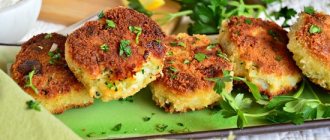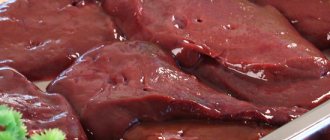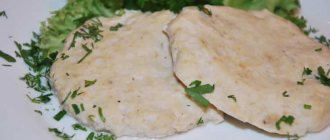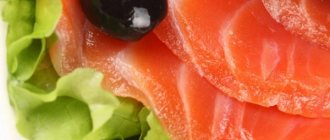The standard in milkshakes
Any product has its own original recipe, milkshake is no exception. The standard set of ingredients is as follows: milk and ice cream (or cream). Additional combinations of products are determined by individual taste. How many calories are in a milkshake is determined by the set of products.
The most successful ingredients for preparing the drink are:
- berries: raspberries, blueberries, currants, strawberries;
- fruits: peach, apricot, melon, banana, kiwi;
- nuts: almonds, hazelnuts;
- dried fruits: prunes, dried apricots;
- sweets: marshmallows, chocolate.
The cooking process is quite simple. It is necessary to mix the selected products in a blender bowl, grind them, transfer the contents to the mixer bowl, add milk and beat for 2 - 5 minutes. When serving, you can decorate with syrup, sweets, and nuts.
Calories in Milkshake. Chemical composition and nutritional value.
Nutritional value and chemical composition of “Milkshake”.
The table shows the nutritional content (calories, proteins, fats, carbohydrates, vitamins and minerals) per 100 grams of edible portion.
| Nutrient | Quantity | Norm** | % of the norm in 100 g | % of the norm in 100 kcal | 100% normal |
| Calorie content | 119 kcal | 1684 kcal | 7.1% | 6% | 1415 g |
| Squirrels | 3.05 g | 76 g | 4% | 3.4% | 2492 g |
| Fats | 2.7 g | 56 g | 4.8% | 4% | 2074 g |
| Carbohydrates | 20.85 g | 219 g | 9.5% | 8% | 1050 g |
| Alimentary fiber | 0.3 g | 20 g | 1.5% | 1.3% | 6667 g |
| Water | 72.2 g | 2273 g | 3.2% | 2.7% | 3148 g |
| Ash | 0.9 g | ~ | |||
| Vitamins | |||||
| Vitamin A, RE | 18 mcg | 900 mcg | 2% | 1.7% | 5000 g |
| Retinol | 0.018 mg | ~ | |||
| beta carotene | 0.004 mg | 5 mg | 0.1% | 0.1% | 125000 g |
| Vitamin B1, thiamine | 0.047 mg | 1.5 mg | 3.1% | 2.6% | 3191 g |
| Vitamin B2, riboflavin | 0.222 mg | 1.8 mg | 12.3% | 10.3% | 811 g |
| Vitamin B4, choline | 17 mg | 500 mg | 3.4% | 2.9% | 2941 g |
| Vitamin B5, pantothenic | 0.363 mg | 5 mg | 7.3% | 6.1% | 1377 g |
| Vitamin B6, pyridoxine | 0.025 mg | 2 mg | 1.3% | 1.1% | 8000 g |
| Vitamin B9, folates | 5 mcg | 400 mcg | 1.3% | 1.1% | 8000 g |
| Vitamin B12, cobalamin | 0.32 mcg | 3 mcg | 10.7% | 9% | 938 g |
| Vitamin D, calciferol | 1 mcg | 10 mcg | 10% | 8.4% | 1000 g |
| Vitamin D3, cholecalciferol | 1 mcg | ~ | |||
| Vitamin E, alpha tocopherol, TE | 0.05 mg | 15 mg | 0.3% | 0.3% | 30000 g |
| Vitamin K, phylloquinone | 0.2 mcg | 120 mcg | 0.2% | 0.2% | 60000 g |
| Vitamin RR, NE | 0.124 mg | 20 mg | 0.6% | 0.5% | 16129 g |
| Macronutrients | |||||
| Potassium, K | 224 mg | 2500 mg | 9% | 7.6% | 1116 g |
| Calcium, Ca | 132 mg | 1000 mg | 13.2% | 11.1% | 758 g |
| Magnesium, Mg | 16 mg | 400 mg | 4% | 3.4% | 2500 g |
| Sodium, Na | 111 mg | 1300 mg | 8.5% | 7.1% | 1171 g |
| Phosphorus, P | 126 mg | 800 mg | 15.8% | 13.3% | 635 g |
| Microelements | |||||
| Iron, Fe | 0.31 mg | 18 mg | 1.7% | 1.4% | 5806 g |
| Manganese, Mn | 0.039 mg | 2 mg | 2% | 1.7% | 5128 g |
| Copper, Cu | 65 mcg | 1000 mcg | 6.5% | 5.5% | 1538 g |
| Selenium, Se | 1.9 mcg | 55 mcg | 3.5% | 2.9% | 2895 g |
| Zinc, Zn | 0.48 mg | 12 mg | 4% | 3.4% | 2500 g |
| Digestible carbohydrates | |||||
| Mono- and disaccharides (sugars) | 20.85 g | max 100 g | |||
| Essential amino acids | |||||
| Arginine* | 0.11 g | ~ | |||
| Valin | 0.204 g | ~ | |||
| Histidine* | 0.083 g | ~ | |||
| Isoleucine | 0.185 g | ~ | |||
| Leucine | 0.299 g | ~ | |||
| Lysine | 0.242 g | ~ | |||
| Methionine | 0.076 g | ~ | |||
| Threonine | 0.138 g | ~ | |||
| Tryptophan | 0.043 g | ~ | |||
| Phenylalanine | 0.147 g | ~ | |||
| Nonessential amino acids | |||||
| Alanin | 0.105 g | ~ | |||
| Aspartic acid | 0.231 g | ~ | |||
| Glycine | 0.065 g | ~ | |||
| Glutamic acid | 0.639 g | ~ | |||
| Proline | 0.295 g | ~ | |||
| Serin | 0.166 g | ~ | |||
| Tyrosine | 0.147 g | ~ | |||
| Cysteine | 0.028 g | ~ | |||
| Sterols (sterols) | |||||
| Cholesterol | 11 mg | max 300 mg | |||
| Saturated fatty acids | |||||
| Saturated fatty acids | 1.681 g | max 18.7 g | |||
| 4:0 Oil | 0.088 g | ~ | |||
| 6:0 Kapronovaya | 0.052 g | ~ | |||
| 8:0 Caprylic | 0.03 g | ~ | |||
| 10:0 Kaprinovaya | 0.068 g | ~ | |||
| 12:0 Lauric | 0.076 g | ~ | |||
| 14:0 Miristinovaya | 0.272 g | ~ | |||
| 16:0 Palmitinaya | 0.71 g | ~ | |||
| 18:0 Stearic | 0.327 g | ~ | |||
| Monounsaturated fatty acids | 0.78 g | min 16.8 g | 4.6% | 3.9% | |
| 16:1 Palmitoleic | 0.06 g | ~ | |||
| 18:1 Oleic (omega-9) | 0.679 g | ~ | |||
| Polyunsaturated fatty acids | 0.1 g | from 11.2 to 20.6 g | 0.9% | 0.8% | |
| 18:2 Linolevaya | 0.061 g | ~ | |||
| 18:3 Linolenic | 0.039 g | ~ | |||
| Omega-3 fatty acids | 0.039 g | from 0.9 to 3.7 g | 4.3% | 3.6% | |
| Omega-6 fatty acids | 0.061 g | from 4.7 to 16.8 g | 1.3% | 1.1% | |
| Other substances | |||||
| Caffeine | 2 mg | ~ | |||
| Theobromine | 23 mg | ~ |
The energy value of the milkshake is 119 kcal.
Primary Source: Created in the application by the user. Read more.
** This table shows the average levels of vitamins and minerals for an adult. If you want to know the norms taking into account your gender, age and other factors, then use the “My Healthy Diet” application.
Banana milkshake
This option is perfect for those who exercise, since this particular drink energizes you with strength and will help restore the balance of vitamins in the body.
Recipe:
- milk - 300 ml;
- banana - 50 g;
- ice cream - 150 g.
How many calories are in a banana milkshake? As in the previous case, it all depends on the fat content of dairy products; on average, with low fat content, the calorie content is 80 kcal. As for proteins, there are 3 g of them, 3.2 g of fat, 10 g of carbohydrates.
What calories? How are they measured in food?
calories
is a unit of energy. We tend to associate calories with food, but they apply to anything that contains energy. For example, a gallon (about 4 liters) of gasoline contains about 31,000,000 calories. You can drive your car 22 miles (35 km) on the calories of 217 Big Macs.
Specifically, a calorie is the amount of energy or heat required to raise the temperature of 1 gram of water by 1 degree Celsius (1.8 degrees Fahrenheit). One calorie is equal to 4.184 joules, a common unit of energy used in the physical sciences.
Most of us think of calories in relation to what we eat and drink, for example, “There are 200 calories in a can of soda.” It turns out that the calories listed on food packaging are actually kilocalories (1000 calories = 1 kilocalorie). So that can of soda actually contains 200,000 calories (but don't worry, the same applies to exercise - when the exercise chart says you burn 100 calories running a mile, that means 100,000 calories). "Calories" food is sometimes capitalized to show the difference, but this is not usually the case.
Human beings need energy to survive—to breathe, to move, to pump blood—and they get that energy from food. The number of calories in a food is a measure of how much potential energy it has. There are 4 calories per gram of carbohydrates, 4 calories per gram of protein, and 9 calories per gram of fat. Food is the combination of these three building blocks. So, if you know how many carbohydrates, fats and proteins are in a food, you know how many calories or how much energy is in that food.
If we look at the nutrition label on the back of a package of Maple Brown Sugar Oatmeal, we find that it has 160 calories. This means that if we were to pour this oatmeal into a dish, set the oatmeal on fire and cause it to burn completely, the resulting reaction would produce 160 kilocalories (remember: food calories are kilocalories) - enough energy to raise the temperature by 160 kilograms of water by 1 degree Celsius. If we look closely at the nutrition label, we see that our oatmeal contains 2 grams of fat, 4 grams of protein and 32 grams of carbohydrates, for a total of 162 calories. Of these 162 calories, 18 come from fat (9 cal x 2 g ), 16 from protein (4 cal x 4 g) and 128 from carbohydrates (4 cal x 32 g).
Our bodies “burn” the calories in oatmeal through metabolic processes through which enzymes break down carbohydrates into glucose and other sugars, fats into glycerol and fatty acids, and proteins into amino acids (see How Food Works for more information). These molecules are then transported through the bloodstream to the cells, where they are either absorbed for immediate use or sent to the final stage of metabolism, where they react with oxygen to release stored energy.
,
Types of cocktails
How many people, so many tastes and preferences. Everyone strives to create exactly the drink that would fully meet their taste expectations.
We can talk about types in terms of certain additives. This is how you can distinguish between the options:
- Fruit: with the addition of kiwi, orange, banana.
- Berry: cherry-chocolate, raspberry, strawberry.
- With the addition of syrups, marshmallows, chocolate, marmalade, caramel.
- Coffee, with oatmeal and others.
These drinks also differ in their calorie content. You can find out how many calories are in a milkshake by adding up the calorie content of the ingredients included in it.
Dietary properties:
What calorie content does a milkshake with ice cream and syrup have, what dietary properties does it have? All this is of great interest to those who lead a healthy lifestyle and monitor their health and figure. So we will try to answer these questions in the following article.
So:
A milkshake is a sweet drink made with milk and ice cream. To give it a special taste, syrups, whipped cream, fruits, etc. are added to it. There is nothing complicated in its preparation: the mixture is placed in a mixer or shaker and beaten thoroughly. Because of this, this drink is also called milkshakes (from the English milk - milk and shake - shake).
Milkshakes are one of the most popular dessert cocktails, with dozens of different recipes. They gained worldwide fame thanks to the Martin Lewis drink, which was ordered by the heroine of the movie Pulp Fiction at the “fabulous” price of $5.
But the history of milkshakes is much older than the aforementioned film. At first they were prepared mainly in cafes, because there were no household refrigerators for storing milk yet. Everything changed in the 30s of the twentieth century, when freon refrigerators appeared.
American President George Washington, who loved ice cream and drinks made from it, was a great connoisseur of this delicacy. The secretary had to write down many cocktail recipes that the president came up with, combining new ingredients.
At the beginning of the last century, drinks still had to be shaken by hand until the first Arnold Electric mixer appeared in 1919. This device came with a collection of recipes for milkshakes. The boom of this drink began in the 50s of the last century. It has not lost its popularity today. Both adults and children love him.
Delicate banana milk coffee
Banana Coffee Milkshake is a wonderfully creamy drink that will definitely appeal to lovers of aromatic beans. This milkshake will be a real must-have for those who want to cheer up in hot weather.
Ingredients:
- Vanilla ice cream – 100 g
- Milk – 150 ml
- Whipped cream - to taste
- Instant coffee – 1 teaspoon
- Banana – ½
| Recipe parameters | |
| Cooking time | 5 minutes |
| Calorie content | 470 kcal or 350 kcal (depending on whether you use whipped cream) |
| Complexity | Just |
| Number of servings | 1 |
Expert opinion
Stanislav Arkannikov
Dermatologist, cosmetologist
Rumors about the dangers of coffee are greatly exaggerated. Caffeine has a stimulating effect, relieves headaches, stimulates cardiac activity, eliminates drowsiness, and increases mental and physical performance.
Step by step recipe:
- Add ice cream, milk, frozen banana and coffee to blender. Not only vanilla ice cream flavors are suitable, but also coffee, banana and even chocolate.
- Mix the ingredients until smooth.
- Pour the liquid into a glass and add whipped cream.
- Aroma
- Combining coffee with milk is good for bones
- A must-have for coffee lovers in hot weather
- Coffee and milk create a large amount of toxins in the body
- Don't drink on an empty stomach
Cocktail “Tropical Paradise”
- Tropical taste
- Nutritional value
- Mango relieves nervous tension, relieves stress and improves mood
- Mango is an allergenic product, so you should treat it with caution when first consuming it.
What we cook from:
- Banana – ½
- Ice cream – 100 g
- Yogurt – 100 ml
- Strawberries – 30-40 g
- Mango – 1/3
| Recipe parameters | |
| Cooking time | 5 minutes |
| Calorie content | 410 kcal |
| Complexity | Just |
| Number of servings | 1 |
Not everyone has mangoes at home. It can be replaced with peach. Any yogurt and ice cream are suitable: both classic and fruit varieties (banana, strawberry, peach, cherry, raspberry, and so on).
How to cook:
- Cut all fruits and berries into pieces.
- Place them in the freezer or refrigerator for 30-40 minutes.
- After that, throw all the ingredients into the mixer and mix. 30-60 seconds will be enough.
- Serve in chilled glasses and garnish with strawberries.
Banana smoothie with nuts and seeds
- Nutritional value
- Bananas go well with nuts and seeds
- Calorie content
Take for the recipe:
- Milk – 150 ml
- Ice cream – 100 g
- Banana – ½
- Flax seeds – ½ teaspoon
- Sunflower seeds – 1 teaspoon
- Almonds – 3-5 pieces
- Vanilla extract - to taste
Nuts and seeds can be replaced with any others.
| Recipe parameters | |
| Cooking time | 5 minutes |
| Calorie content | 460 kcal |
| Complexity | Just |
| Number of servings | 1 |
Expert opinion
Mariyat Mukhina
Founder of the Origitia network of clinics, nutritionist
Flaxseed contains a rich composition: phosphorus, iron, copper, manganese, calcium, silene and other useful substances. However, it is important to follow the dosage and not consume more than 1 tablespoon per day.
Step by step cooking:
- Add flax and sunflower seeds to a bowl of water 5-10 hours before.
- Cut the banana into pieces and put it in the freezer.
- Place all ingredients in a mixer and stir until smooth. You can use vanilla, nut, banana, almond or butter ice cream.
- Serve the milkshake in a beautiful glass.








